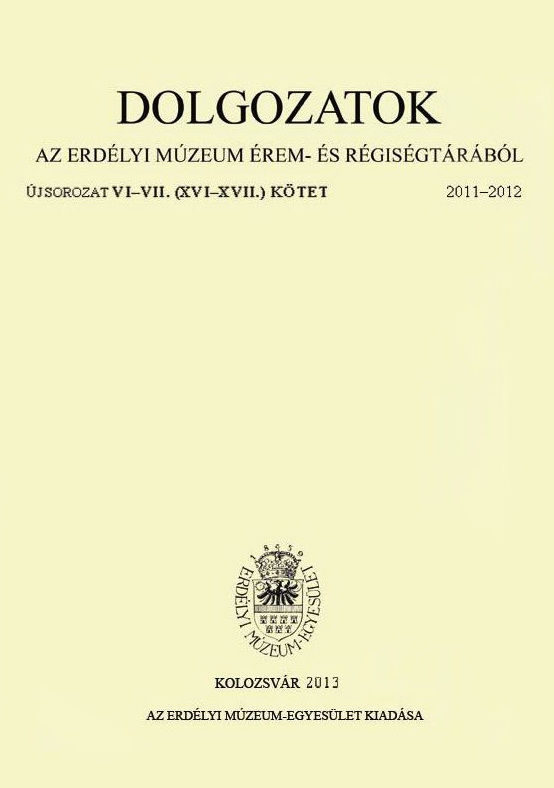Középkori erdélyi zarándokok
Pilgrims from Medieval Transylvania
Author(s): András KovácsSubject(s): Cultural history, Architecture, Visual Arts, Middle Ages, Modern Age
Published by: Erdélyi Múzeum-Egyesület
Keywords: pilgrimage; Transylvania; Santiago de Compostela; Rocamadour; Rome
Summary/Abstract: The inland archival records concerning the history of the pilgrims in medieval Transylvania are quite scarce, while among the foreign sources of the subject the most popular are those preserved in the Vatican archives, which mostly refer to pilgrims of Rome and the Holy Land. The information of written sources was completed by Elek Benkő with the inventory of the pilgrim’s signs that were reproduced on Transylvanian bells. As for the present approach, the author widens our knowledge on the subject by the analysis of those few Transylvanian buildings that can be connected to pilgrimages. Among these the 14th century former parish church (Calvinistic church in our days) of Nádasdaróc (Dorolţu), built on the domains of the Transylvanian’s bishop, deserves our attention due to its mural painting. The composition dating back to the end of the 14th century depicts the archangel St. Michael, St. Jacob the elder and a donor, suggesting a Compostela (Sp) pilgrimage. In the same time with the pilgrim of Nádasdaróc some people from the parish church of Magyarvista (Viştea, also Calvinistic church in our days) must have accomplished a pilgrimage to Compostela as well. The memory of their deed was only kept by a fresco in the church. The patrons of the reconstruction of the church from Homoródjánosfalva (Ioneşti, Unitarian church in our days) must have been on a pilgrimage to Galice (Sp) before 1522, as the pilgrims’ signs carved on the corbels of the late gothic choir – St. James’ scallop shell, a staff and scrip – apparently prove it. George Compol from Kolozsvár (Cluj, Klausenburg) founded in 1521, together with his wife, the Compol- or so called Rokonad Chapel, that was built outside the town walls. Analogies for the uncommon Hungarian name of the chapel can be identified not only in Kolozsvár, but in the last will of a citizen from Pressburg (Pozsony, Prešpork: Bratislava, Sl.) as well. Moreover John Drágfi (d.1526), “comes of Temes” and royal diplomat, dedicated an altar to the same Mary of Rokonad in the chapel of his castle (?) from Szilágycseh (Cehu Silvaniei). The name derives from Our Lady of Rocamadour, suggesting in all three cases pilgrimages to the shrine of the saint in Gascogne (Fr). Finally, the chapel of John Lászai/Lazói, Johannes Lazoinus by his humanist name (1444–1523), canon of Gyulafehérvár (Alba Iulia), should be mentioned. The façade of this quite early building of the Transylvanian renaissance (1512) is adorned by a niche flanked by the Roman apostles Peter and Paul. Quite probably the niche – empty in our days − was originally decorated with a relief representing the vernicle, the whole composition resembling thus the image of the common pilgrim’s badges of the Roman palmers.
Journal: Dolgozatok az Erdélyi Múzeum Érem- és Régiségtárából. Új sorozat
- Issue Year: 2012
- Issue No: VI-VII
- Page Range: 209-216
- Page Count: 8
- Language: Hungarian

